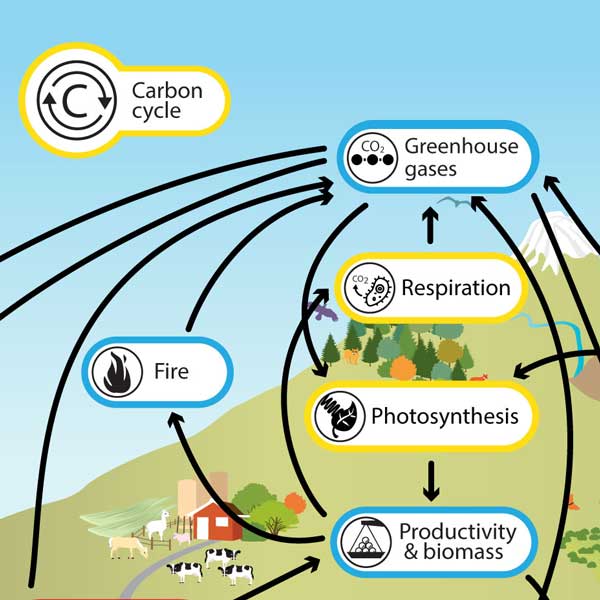Report on the Alignment of End-of-Life Services with Sustainable Development Goals (SDGs)
Introduction: Recontextualizing Funerary Services within Global Sustainability Frameworks
An analysis of the operational framework of end-of-life service providers, such as funeral homes and crematoria, reveals significant potential for alignment with the United Nations Sustainable Development Goals (SDGs). While traditionally viewed through a lens of community and personal support, these services have tangible environmental, social, and economic impacts that can be strategically managed to contribute positively to global sustainability targets.
Core Operational Analysis and SDG Integration
Social and Economic Contributions to Community Well-being
The functions of a funeral home directly support several key SDGs focused on human and community health.
- SDG 3: Good Health and Well-being: By providing structured bereavement support and compassionate care, these institutions play a critical role in supporting the mental health of grieving community members, mitigating the long-term health impacts of loss.
- SDG 8: Decent Work and Economic Growth: As local enterprises, funeral homes provide stable employment, contributing to local economic resilience and fostering sustainable economic growth within the community.
- SDG 11: Sustainable Cities and Communities: These services are an integral component of community infrastructure, ensuring dignified and orderly processes for all citizens. They uphold cultural and social fabrics, which are essential for inclusive and resilient communities.
Environmental Stewardship in Funerary Practices
End-of-life practices, including burial and cremation, have direct environmental consequences. A strategic approach can align these practices with environmental SDGs.
- Resource Consumption and Waste Management (SDG 12: Responsible Consumption and Production): Traditional burials often involve non-biodegradable materials and toxic embalming fluids. A shift towards biodegradable caskets, shrouds, and the elimination of harmful chemicals directly supports responsible consumption patterns.
- Climate Impact and Energy Use (SDG 13: Climate Action & SDG 7: Affordable and Clean Energy): Cremation is an energy-intensive process. Investing in modern, energy-efficient cremators and exploring alternative energy sources can significantly reduce the carbon footprint of these operations. Furthermore, promoting natural burials can contribute to carbon sequestration in soil.
- Land and Water System Protection (SDG 15: Life on Land & SDG 6: Clean Water and Sanitation): Green or natural burial practices avoid the use of embalming fluids containing formaldehyde, which can contaminate soil and groundwater. These practices help preserve natural habitats and protect terrestrial ecosystems.
Recommendations for Enhancing SDG Alignment
Strategic Pathways toward Sustainable Operations
Funeral service providers can adopt several key strategies to deepen their commitment to the SDGs.
- Offer and promote green burial options that eliminate vaults, toxic chemicals, and non-biodegradable containers, directly supporting SDG 12 and SDG 15.
- Invest in or transition to alkaline hydrolysis (“water cremation”), a process with a significantly lower carbon footprint than traditional cremation, contributing to SDG 13.
- Source caskets, urns, and other materials from local, sustainable producers to reduce transport emissions and support local economies (SDG 8, SDG 11).
- Partner with local conservation organizations to establish memorial tree-planting programs, actively contributing to reforestation and carbon sequestration efforts (SDG 13, SDG 15).
- Educate communities on the environmental impact of funeral choices, empowering consumers to make decisions that align with sustainable values (SDG 12).
Analysis of the Article in Relation to Sustainable Development Goals
1. Which SDGs are addressed or connected to the issues highlighted in the article?
Based on a thorough review of the provided HTML code, no Sustainable Development Goals (SDGs) are addressed or connected to the content. The text is the source code for a commercial website for a funeral home. It does not contain any narrative, discussion, or highlighting of social, economic, or environmental issues that would relate to the SDGs.
2. What specific targets under those SDGs can be identified based on the article’s content?
Since no SDGs are addressed in the article, no specific targets can be identified. The content is limited to advertising the services of a funeral home and does not provide any information or context that aligns with any of the 169 SDG targets.
3. Are there any indicators mentioned or implied in the article that can be used to measure progress towards the identified targets?
The article does not mention or imply any indicators. As no SDGs or targets are relevant to the content, there are consequently no metrics or data points that could be used to measure progress.
SDGs, Targets, and Indicators Analysis
| SDGs | Targets | Indicators |
|---|---|---|
| No relevant information found in the article. | No relevant information found in the article. | No relevant information found in the article. |
Source: heritagebattlefield.com







